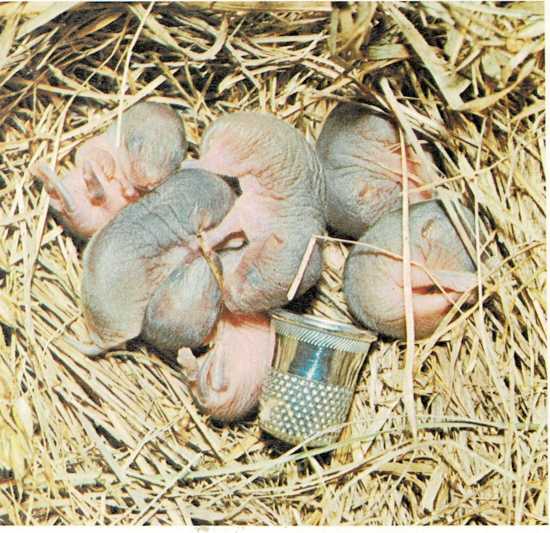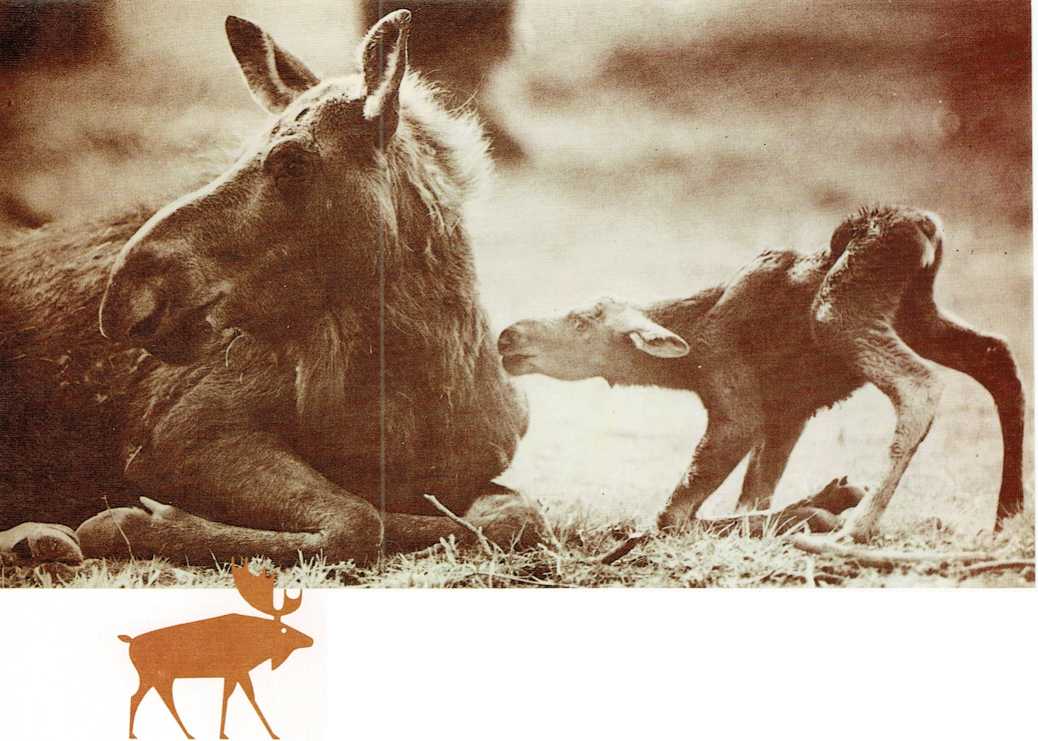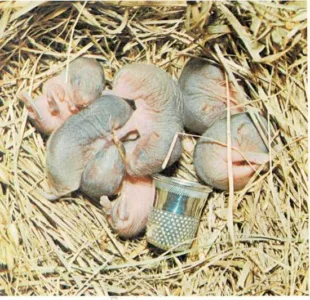Mammal babies
Is a mouse like a moose? Or a dolphin like a deer? Or a bat like a cat?
These animals seem to be quite different from each other. But they’re
all alike in one important way. They are all mammals. And that simply
means they all get the same kind of food when they are babies—milk
that comes from their mothers’ bodies.
Most mammal babies live inside their mothers before they are born. A
baby mammal is joined to its mother by a tube. The baby gets food and
oxygen from the mother’s body through the tube. The baby lives and grows
and when its body is ready, the baby comes out of the mother’s body.
Different kinds of baby birds eat different kinds of food. So do baby
fish, reptiles, insects, and amphibians.

Newborn meadow mice are not much bigger than a thimble.
Their eyes are closed and they are weak and helpless.
Meadow Mice

But all baby mammals drink milk that comes from their mothers’ bodies.
Baby lions drink milk. Baby mice drink milk. Baby whales drink milk.
Baby bats drink milk. No baby mammal ever gets any other kind of food
until it begins to grow up.
Many kinds of mammal babies are weak and helpless for a long time.
Kittens, puppies, mice, and human babies, who are mammals too, are born
with weak legs. Some mammal babies are stronger. A moose calf is strong
enough to follow its mother after just a few days. A pronghorn can run
as fast as 25 miles (40 kilometers) an hour when it is only a day old.
Mammal babies are different in many ways, but in their kind of food,
they are all alike.
Moose
A baby moose is born with its eyes open. It can walk in just a few
hours, but it is still very weak.

